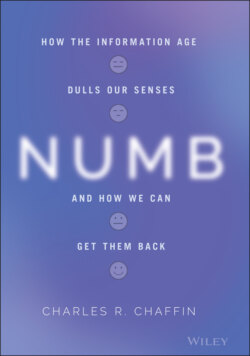Читать книгу Numb - Charles R. Chaffin - Страница 12
CHAPTER 2 Can I Have Your Attention Please?
ОглавлениеImagine that you are driving a car down the road. You are effortlessly moving down your path, maneuvering the steering wheel through the twists and turns as well as hitting the accelerator and brake when necessary. You have driven on this road dozens of times so you know each curve and even a few potholes. As you are driving, your attention shifts from the road to an important meeting that is happening at work on Monday morning. As you continue your trip, you think about the work that needs to be done in advance of that meeting. By the end of the 20‐minute drive, you have mapped out how you would like the Monday meeting to flow and even considered how you would like to structure the presentation.
Now imagine that you are driving down the same road and you have a passenger sitting next to you. She is a good friend who is sharing the emotional details of her recent breakup. You are performing all of the same tasks in driving the car as outlined above but also listening and responding to your friend's story. You are constantly shifting focus between the road and your friend, sometimes focusing on the road a bit more when there is a turn and sometimes concentrating on your friend when she gets more emotional or asks you a question. Your mind briefly wanders to the Monday meeting while she is talking, but between the road and your friend, there is little opportunity to focus on the flow of the upcoming presentation or potential outcomes. As you drive, you are responding to your friend with an occasional “yes” or “no” or even a head nod while your eyes are focused on the road. By the end of the drive, you have a clear sense of what happened in your friend's breakup (or at least her side of the story), but nothing beyond a reminder that the Monday presentation needs some work.
Just for fun, let's add one more scenario. It is now pouring rain while you are driving: Same road, same friend, same breakup. You are struggling to see the road while steering and carefully managing the accelerator. Given the severity of the road conditions, you prioritize your attention towards driving. You are using the brake far more often as the rainstorm impedes the view of the road ahead of you. Very little of your attention is devoted to your friend's breakup story; you only manage to perceive when she gets more emotional. You are mindful enough to offer a few grunts of agreement while she talks, but in reality if you had to recount the story of her breakup to others, you would not perform well. Between the white‐knuckle driving and your friend's breakup story, you never once thought of your presentation at the Monday meeting.
All of these different scenarios highlight the nature of attention. In the first example, you were familiar with the road and the conditions were ideal for driving. You did not have to concentrate too heavily on the path ahead so you had attention to devote to the meeting on Monday. You were able to develop some concrete plans for the presentation in your mind that will be useful when you return to your desk. In the second scenario, you had attention to devote to your friend's breakup story because the drive was not overly taxing. However, between the drive and your friend, you had little attention to devote to the planning of the Monday presentation. In this scenario, you were compelled to allocate whatever attention you had left over from driving to your friend. Because the road was clear, you could devote attention to your friend's breakup story. However, in the third scenario, when the conditions of the road became dangerous with the storm, you had to prioritize your attention towards driving and limit how much attention you could devote to your friend with almost none dedicated to your Monday presentation.
